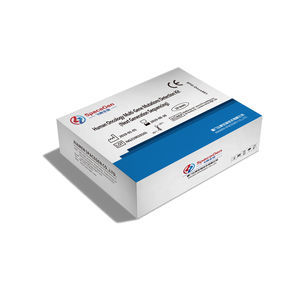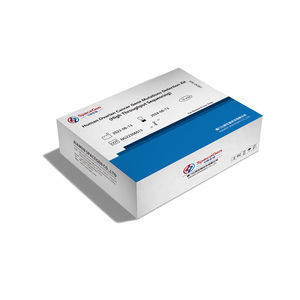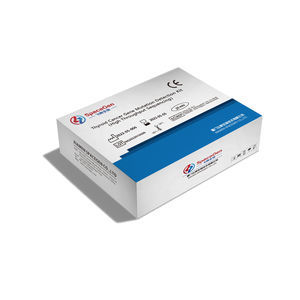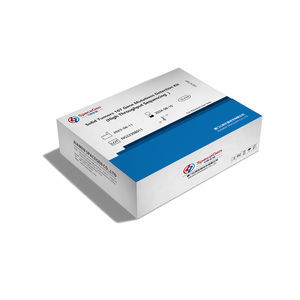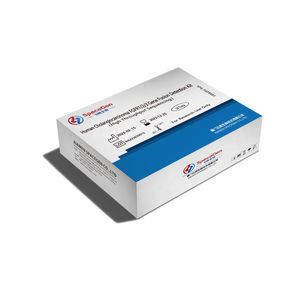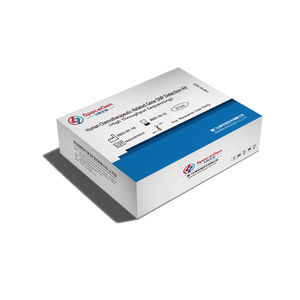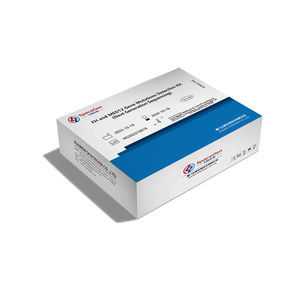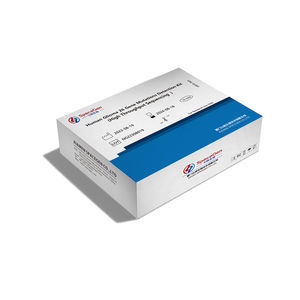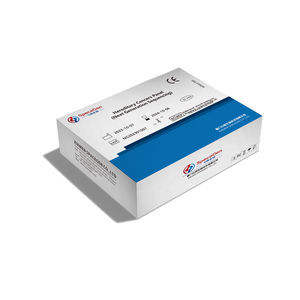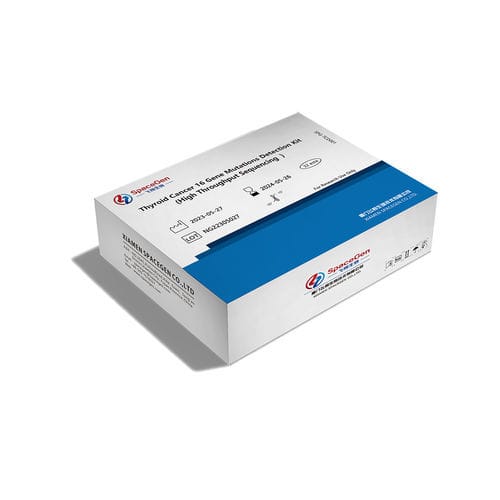

- Company
- Products
- Catalogs
- News & Trends
- Exhibitions
Research detection kit NG22305027for thyroid canceroncologyGNAS
Add to favorites
Compare this product
fo_shop_gate_exact_title
Characteristics
- Applications
- for research, for thyroid cancer
- Application field
- oncology
- Tested parameter
- GNAS, for BRAF mutations, for KRAS mutations, for NRAS mutations, for PIK3CA Gene, for PTEN gene, for TP53 gene, HRAS, for AKT1 gene mutations
- Sample type
- biological
- Analysis mode
- for NGS sequencing, for sequencing
- Result display time
4 h
Description
Thyroid nodules can be found in various age groups. In the adult population, the incidence rate detected through physical examinations is approximately 5%-7%, while the incidence rate detected through ultrasound examination ranges from 20%-76%. Different pathological types of thyroid nodules (tumors) exhibit significant differences in their biological behavior. From benign thyroid adenomas and indeterminate thyroid nodules to thyroid carcinoma, these variations can have a profound impact on patient prognosis and treatment options.
AUXILIARY EXAMINATION AND DIAGNOSIS
Ultrasound: Ultrasound examination is simple and non-invasive, with high specificity and sensitivity for thyroid nodule detection.
Cytopathology Diagnosis Report: The Bethesda System is used for the reporting of cytopathology diagnosis.
Molecular Testing: To improve the accuracy and effectiveness of thyroid fine-needle aspiration (FNA) cytology diagnosis, molecular testing is recommended for III and IV category thyroid FNA specimens or Puncture eluent.
DETECTED GENES
This test adopts the high-throughput sequencing method and covers the genes related to the identification, prognosis and adjuvant treatment of thyroid tumors recommended in the NCCN guidelines, CSCO guidelines and expert consensus.
DETECTION SIGNIFICANCE
1. Patients with thyroid nodules with uncertain results in US-FNA cytological diagnosis undergo testing to assist in the diagnosis of nodule benignity or malignancy.
2. Patients with DTC (Differentiated Thyroid Carcinoma) who are planning for surgical treatment, radioactive iodine therapy, or ablation therapy undergo testing to assess tumor recurrence risk
Catalogs
No catalogs are available for this product.
See all of SPACEGEN‘s catalogsRelated Searches
- Assay kit
- Blood assay kit
- Immunoassay assay kit
- Plasma assay kit
- Infectious disease detection kit
- Analysis software
- Molecular test kit
- Respiratory infection test kit
- Whole blood detection kit
- Optical assay kit
- Clinical assay kit
- Fluorescence assay kit
- Viewer software
- Real-time PCR test kit
- Research assay kit
- Laboratory software
- Windows software
- Laboratory detection kit
- Oncology test kit
- Cell assay kit
*Prices are pre-tax. They exclude delivery charges and customs duties and do not include additional charges for installation or activation options. Prices are indicative only and may vary by country, with changes to the cost of raw materials and exchange rates.

